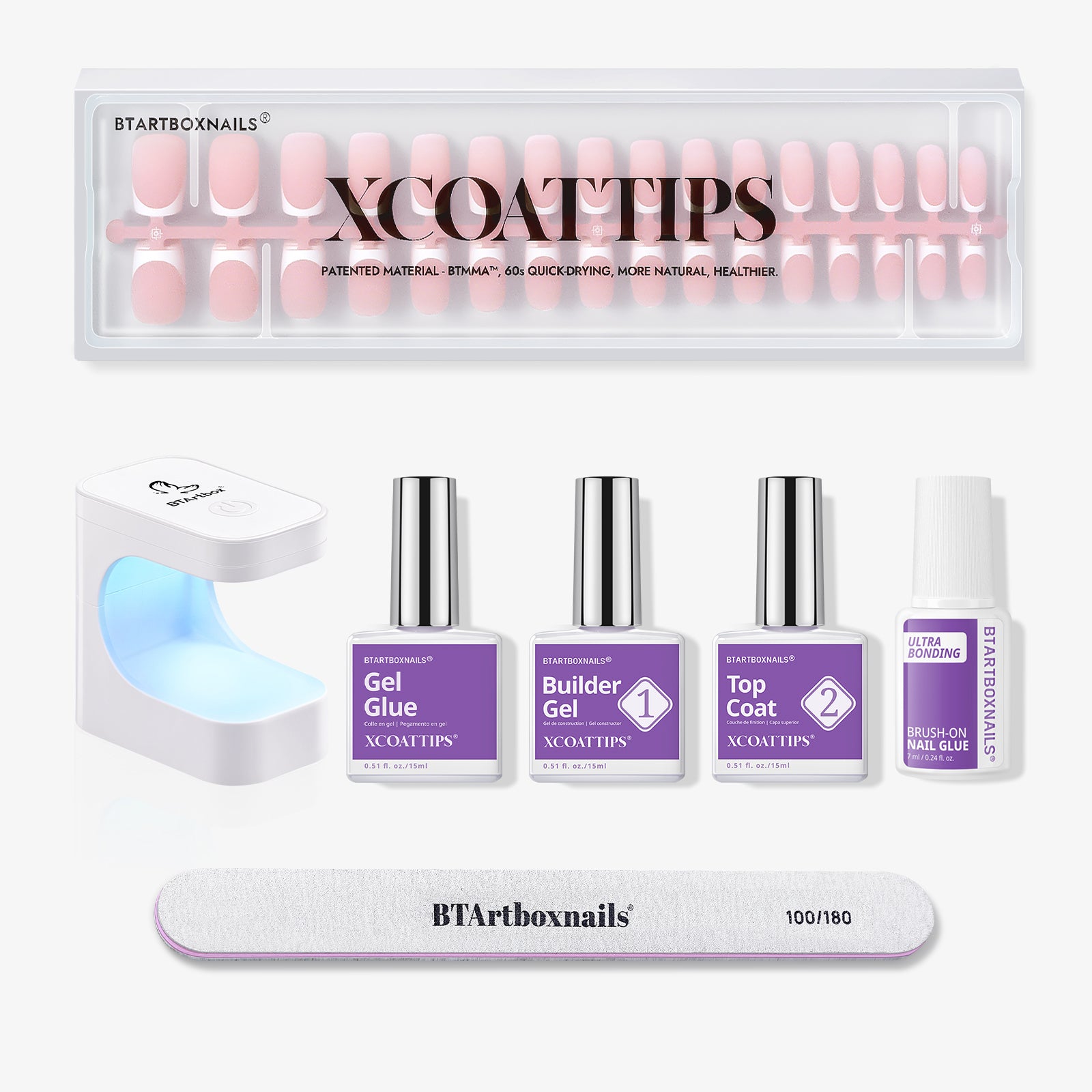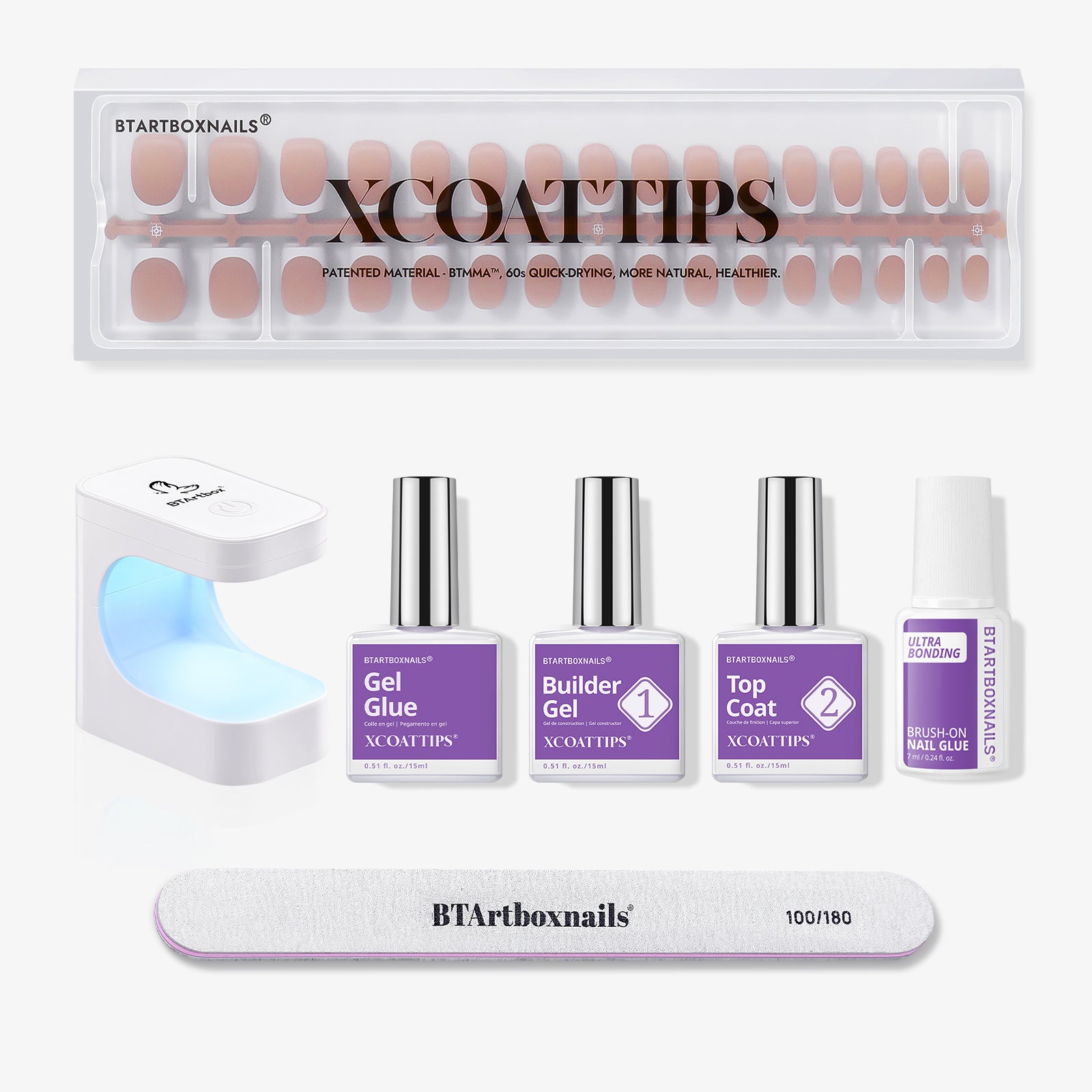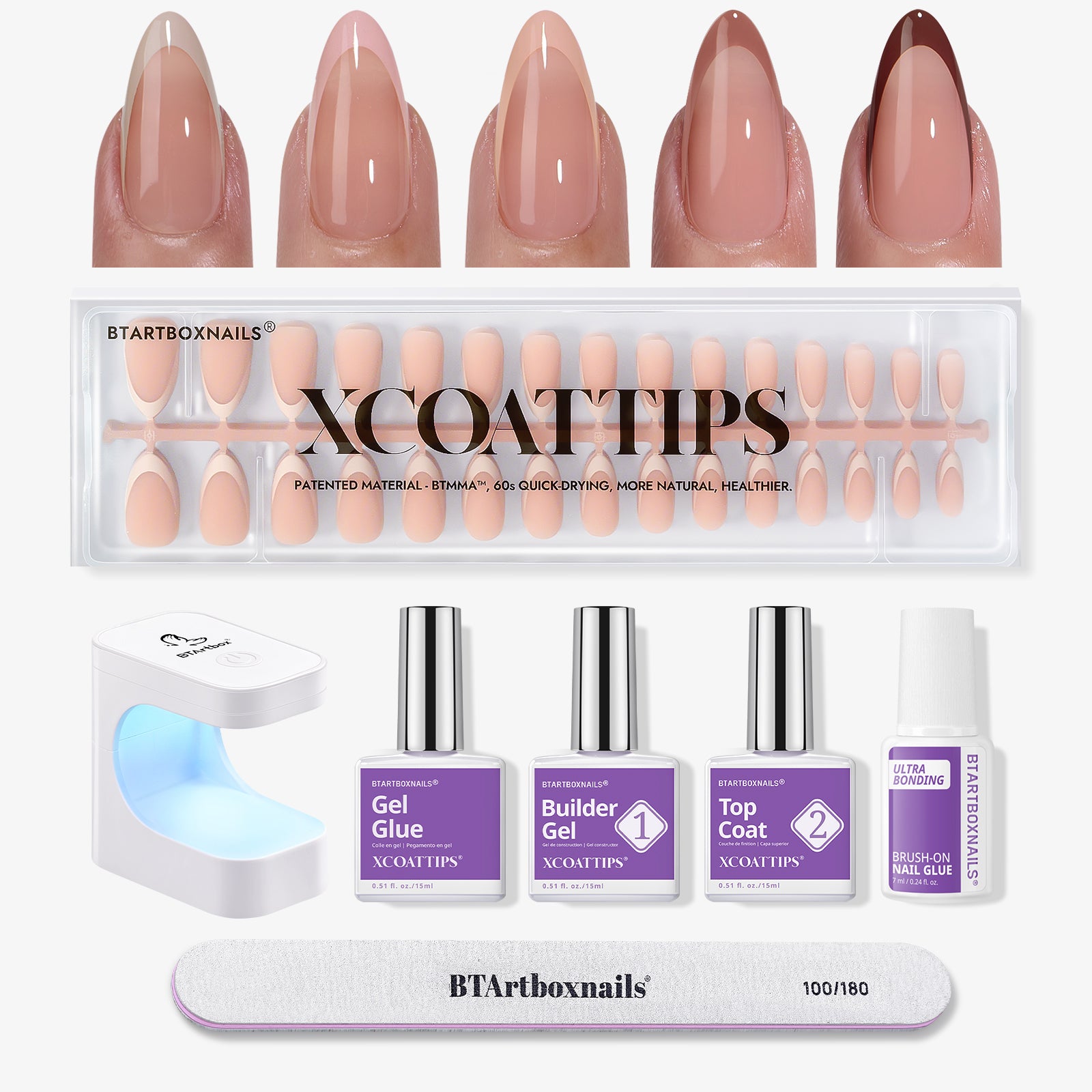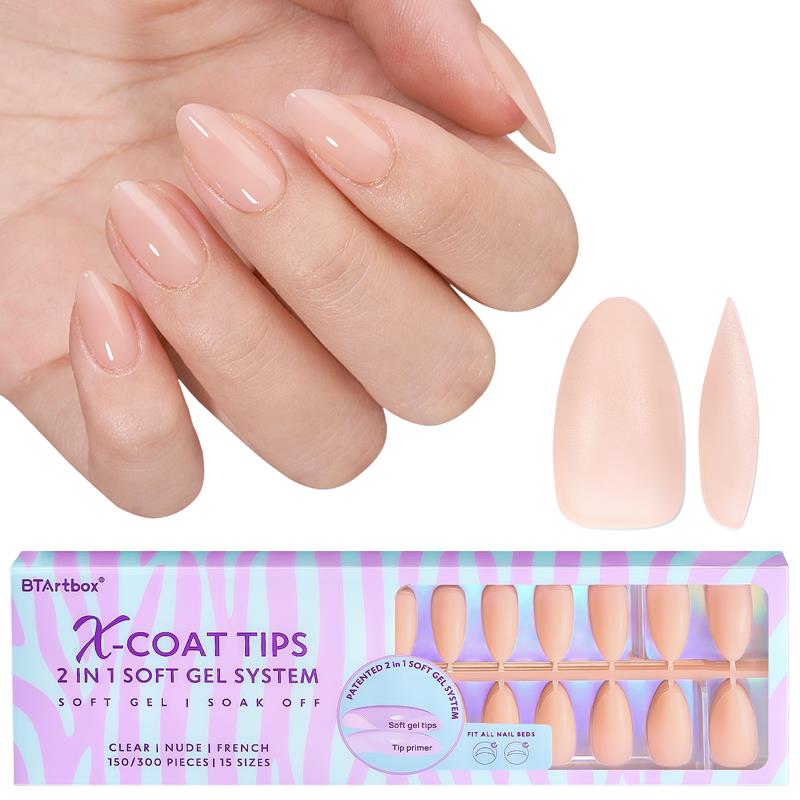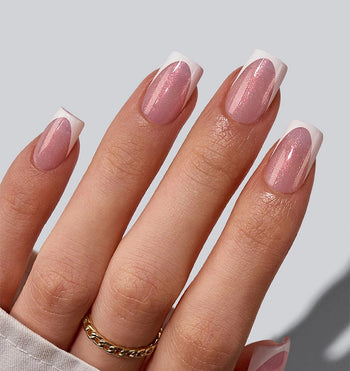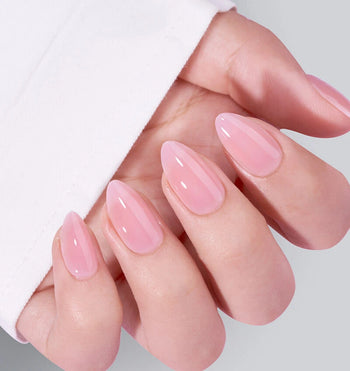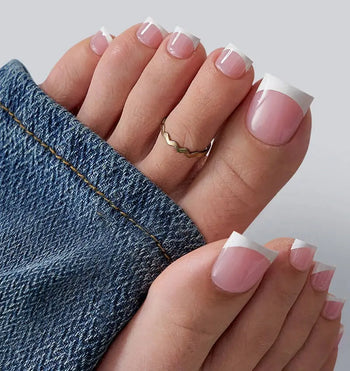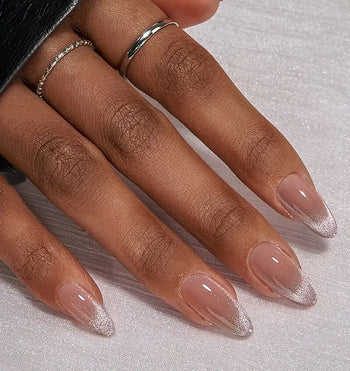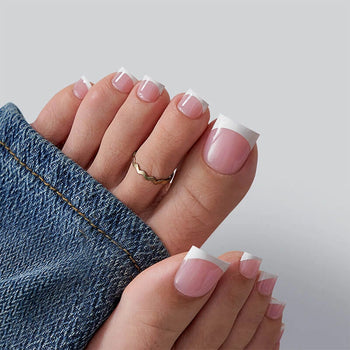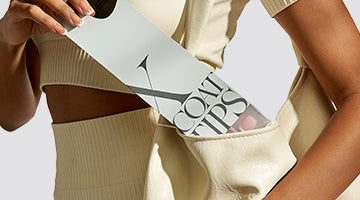Das Beherrschen des Tippens mit langen Nägeln kann eine potenziell mühsame Aufgabe in eine mühelose verwandeln. Wenn Sie Ihre Fingerspitzen schmücken, ist es wichtig, Ihre täglichen Gewohnheiten – einschließlich des Tippens – an Ihre Stilvorlieben anzupassen.
Ob beim Schreiben eines Romans oder beim Versenden einer SMS – lange Nägel müssen Sie nicht ausbremsen. Das Erlernen des Tippens mit den Fingerkuppen und die Wahl der richtigen Nagelform können Ihnen helfen, sowohl Ihre Tippgeschwindigkeit als auch Ihre Nagelintegrität zu erhalten.
Mit ein paar cleveren Anpassungen Ihrer Tippmethode, wie etwa der sanften Anschlagstechnik eines Pianisten und der Verwendung ergonomischer Werkzeuge, können Sie sicher und bequem tippen, ohne auf Ihre glamourösen langen Nägel verzichten zu müssen.
Neugierig auf weitere Tipps und Tricks zum Tippen mit langen Nägeln? Lesen Sie weiter und erfahren Sie, wie Sie Ihr Tippspiel verbessern und Ihre Nägel makellos halten.
Die Wahl der idealen Nagelform und -länge
Die Wahl der richtigen Nagelform und -länge kann Ihr Tipperlebnis deutlich verbessern. Hier erfahren Sie, wie Sie Ihren Stil mit den praktischen Anforderungen beim Tippen in Einklang bringen.
Funktion statt Mode
Bei der Priorisierung der Schreibfähigkeit sollte die Funktion Vorrang vor der Mode haben.
Ovale und runde Nägel bieten eine komfortable Schreibfläche, ohne dabei zu viel Stil einzubüßen. Im Vergleich zu Stiletto- oder spitzen Nägeln bleiben diese Formen weniger leicht an den Tasten hängen.
Quadratische Nägel mit abgerundeten Kanten (manchmal auch als „Squoval“ bezeichnet) können ebenfalls eine praktische Option sein, da sie ein modisches Aussehen mit einem verbesserten Tippkomfort kombinieren.
Länge und Zweckmäßigkeit im Gleichgewicht
Eine moderate Nagellänge ist entscheidend für die Aufrechterhaltung von Tippgeschwindigkeit und -genauigkeit. Normalerweise ist es für das tägliche Tippen praktisch, die Nägel kurz bis mittellang zu halten.
Sie können zwar längere Nägel tragen, auch künstliche oder Acrylnägel, müssen aber möglicherweise Ihre Schreibtechnik entsprechend anpassen. Je länger die Nägel, desto größer ist die Anpassungspflicht für effektives Tippen.
Auswählen von Nagelformen für komfortables Tippen
Die Wahl der Nagelform kann erheblich zu Ihrem Komfort beim Tippen beitragen. Beachten Sie Folgendes:
- Ovale Nägel folgen auf natürliche Weise der Kontur Ihrer Fingerspitzen und ermöglichen eine flüssige Tippbewegung.
- Flach geformte Nägel ermöglichen einen leichteren Kontakt mit den Tasten und verringern das Risiko von Fehlschlägen.
- Runde Nägel stören benachbarte Tasten weniger und bieten eine höhere Präzision.
- Sargnägel oder Vierkantnägel können funktionieren, wenn sie auf einer angemessenen Länge gehalten werden.
Um das Tippen zu optimieren, wählen Sie eine Nagelform, die der natürlichen Form Ihres Fingers entspricht und Ihnen einen bequemen Zugriff auf jede Taste ermöglicht.
Die Schreibtechniken meistern

Um mit langen Nägeln effektiv tippen zu können, ist es wichtig, die Technik anzupassen und bestimmte Fähigkeiten zu üben. Die folgenden Tipps helfen Ihnen, Ihre Tippfähigkeiten zu verbessern und gleichzeitig die Nagelintegrität zu erhalten.
Grundlagen des Zehnfingersystems
Blindschreiben ist eine grundlegende Fähigkeit, bei der man tippt, ohne auf die Tastatur zu schauen. Diese Technik basiert auf dem Muskelgedächtnis, um die Tasten zu finden. So üben Sie dies mit langen Nägeln:
- Positionieren Sie Ihre Hände : Halten Sie Ihre Handgelenke gerade und lassen Sie Ihre Finger über den Tasten der Grundreihe schweben.
- Verwenden Sie die Fingerkuppen : Berühren Sie die Tasten mit den Kuppen Ihrer Fingerspitzen und nicht mit den Nägeln.
Finden Sie Ihren Tipprhythmus
Die Entwicklung eines angenehmen Tipprhythmus ist entscheidend für Geschwindigkeit und Effizienz. Beachten Sie diese Punkte:
- Minimieren Sie die Fingerbewegung: Achten Sie auf kleine, präzise Bewegungen, um Störungen der Nägel zu vermeiden.
- Passen Sie Ihr Tempo an: Beginnen Sie langsam, um die Genauigkeit zu steigern, und steigern Sie dann die Geschwindigkeit, wenn Ihr Selbstvertrauen wächst.
Verbesserung der Tastendruckgenauigkeit
So verbessern Sie die Genauigkeit von Tastendrücken :
- Konzentrieren Sie sich auf sanfte Tastenanschläge : Drücken Sie die Tasten sanft, um Ihre Nägel zu schützen und das Risiko von Tippfehlern zu verringern.
- Üben Sie regelmäßig : Kontinuierliches Üben verbessert mit der Zeit Ihr Muskelgedächtnis und Ihre Genauigkeit.
Ergonomie und Körperhaltung
Beim Tippen mit langen Nägeln ist eine ergonomische Haltung unerlässlich, um Überlastungen vorzubeugen und die Effizienz zu steigern. Die richtige Haltung und Handpositionierung kann Ihr Tipperlebnis deutlich verbessern.
Anpassen Ihres Stuhls und Schreibtischs
Stellen Sie sicher, dass Ihr Stuhl so eingestellt ist, dass Ihre Füße flach auf dem Boden ruhen und Ihre Knie einen 90-Grad-Winkel bilden.
Die Höhe Ihres Schreibtischs sollte mit Ihren Ellbogen übereinstimmen, wenn diese ebenfalls in einem 90-Grad-Winkel gebeugt sind, sodass Ihre Arme bequem ruhen können, ohne dass Sie nach oben oder unten greifen müssen.
Richtige Handpositionierung
Ihre Hände sollten über der Tastatur schweben und Ihre Finger sollten sanft auf den Tasten liegen.
Wenn Sie eine ergonomische Tastatur verwenden, achten Sie darauf, dass sie der natürlichen Handhaltung Rechnung trägt und so gestaltet ist, dass die Finger nicht unnötig gestreckt werden müssen.
Halten Sie Ihre Nägel über den Tasten und schlagen Sie die Tasten mit den Fingerkuppen an.
Erhaltung der Gesundheit des Handgelenks
Halten Sie Ihre Handgelenke in einer neutralen Position, nicht nach oben oder unten gebeugt.
Wenn Ihre Tastatur zu hoch ist, sollten Sie eine Handballenauflage zur Unterstützung verwenden. Dies beugt einer Belastung Ihrer Handgelenke beim Tippen vor und stellt sicher, dass Ihre Nägel Ihre Handgelenkshaltung nicht beeinträchtigen.
Machen Sie häufig Pausen, um sich zu strecken und Ihren Handgelenken eine Pause von der Tippposition zu gönnen.
Nagelpflege beim Tippen
Effektives Tippen mit langen Nägeln erfordert sorgfältige Überlegung, um Schäden zu vermeiden. Mit Prävention, Schutz und strategischen Techniken können Sie sowohl die Nagelgesundheit als auch die Tippeffizienz erhalten.
Verhindern, dass Nägel hängen bleiben
Um das Risiko zu minimieren, dass Ihre Nägel an der Tastatur hängen bleiben, tippen Sie mit den Fingerkuppen und nicht mit den Nägeln. Halten Sie Ihre Finger:
- Gerade : Richten Sie sie an den Tasten aus, um seitliche Belastungen zu verringern.
- Flach : Dadurch wird verhindert, dass sich die Nägel unter den Tastenkanten verhaken.
Denken Sie daran, Ihre Nägel regelmäßig zu schneiden und zu feilen. Achten Sie dabei auf glatte Kanten, da gezackte oder scharfe Ecken leichter hängen bleiben können.
Nägel vor Stößen schützen
Beim Tippen ist es wichtig, die direkte Belastung Ihrer Nägel zu minimieren. Achten Sie darauf:
- Schlagen Sie die Tasten nur leicht an, um die Belastung Ihrer Nägel zu verringern.
- Achten Sie auf eine moderate Nagellänge. Extrem lange Nägel können durch Stöße leichter abbrechen.
Tragen Sie einen Härter oder einen härtenden Lack auf, um Ihre Nägel gegen das wiederholte Tippen beim Tippen zu schützen.
Strategien zur Vermeidung von Kratzern
Ändern Sie Ihre Tippgewohnheiten, um das Risiko von Kratzern auf Ihren Tasten oder der Schreibtischoberfläche zu verringern. Bedenken Sie:
- Halten Sie Ihre Hände parallel zur Tastatur. Dadurch besteht weniger die Gefahr, dass Ihre Nägel über die Oberfläche schleifen.
- Machen Sie Pausen, um Ihre Hände auszuruhen und Ihre Nägel auf Anzeichen von Abnutzung oder Verschleiß zu untersuchen, die zu versehentlichen Kratzern führen könnten.
Schreibzubehör und -ausrüstung
Die Anpassung Ihrer Schreibgeräte und Ihres Zubehörs kann Ihr Tipperlebnis und Ihren Komfort beim Tippen mit langen Nägeln deutlich verbessern. Von Tastaturen, die die Nagelbelastung minimieren, bis hin zu Werkzeugen, die die Touchscreen-Nutzung unterstützen, ohne Schäden zu verursachen – die richtige Ausrüstung kann einen großen Unterschied machen.
Auswahl nagelfreundlicher Tastaturen
Tastaturdesign: Wählen Sie Tastaturen mit abgerundeten Kanten an den Tasten, um zu verhindern, dass Sie beim Tippen mit den Fingernägeln hängen bleiben.
Tastaturen mit flachen und breiten Tasten können die Belastung Ihrer Fingerspitzen und Nägel reduzieren.
Schaltertyp: Suchen Sie nach Tastaturen mit geringerer Betätigungskraft, die weniger Druck erfordern, um einen Tastendruck zu registrieren, wodurch die Belastung Ihrer Fingernägel reduziert wird.
Verwenden von Stiften für Touchscreens
Stifttypen: Ein Stift ist ein außergewöhnliches Zubehör für Touchscreen-Geräte. Er ahmt die Berührung eines Fingers nach, ohne Ihre Maniküre zu gefährden.
Wählen Sie einen Stift mit einer weichen, abgerundeten Spitze für eine nahtlose Interaktion mit dem Bildschirm Ihres Geräts.
- Für Laptops und Tablets: Ein kapazitiver Stift funktioniert gut mit den berührungsbasierten Schnittstellen.
- Für Präzisionsaufgaben: Erwägen Sie einen Stift mit einer feineren Spitze, beispielsweise einen aktiven Stift, der höchste Genauigkeit bietet.
Ergonomisches Zubehör berücksichtigen
Ergonomische Tastaturen: Eine ergonomische Tastatur mit geteiltem Design ermöglicht Ihren Händen eine natürlichere Ruheposition. Die Tasten sind oft mit weniger Bewegung leichter zu erreichen, was das Tippen mit langen Fingernägeln weniger umständlich macht.
Typing Mate oder Keyboard Guard: Dieses Zubehör wird über Ihre Tastatur gelegt und bildet eine physische Barriere, die verhindert, dass Ihre Nägel zwischen den Tasten eingeklemmt werden.
Material: Entscheiden Sie sich für einen Schutz aus weichem, flexiblem Material, um Komfort und Tastenanschlagempfindlichkeit zu erhalten.
Abschluss
Mit ein paar einfachen Tipps können Sie auch mit langen Nägeln problemlos tippen. Verwenden Sie zum Tippen einfach die weichen Teile Ihrer Finger, pflegen Sie Ihre Nägel und wählen Sie Hilfsmittel, die das Tippen angenehm machen.
Tippen Sie schnell und stilvoll mit BTArtBox Nails ' Auswahl an modischen Nägeln, erhältlich in Französische XCOATTIPS und Hochwertige Press-Ons für Komfort und Flair. Genieße müheloses Tippen, ohne auf deine Nägel verzichten zu müssen. Entdecke unsere Klebenägel , Nagel-Sets , Fancy Nails und Stick-On-Nägel für den perfekten Look.
Häufig gestellte Fragen
Welche Tipps gibt es zum Texten mit langen Acrylnägeln?
Das Schreiben von Texten mit langen Acrylnägeln ist einfacher, wenn Sie die Seiten Ihrer Finger oder Ihre Fingerspitzen verwenden.
Sorgen Sie für eine gute Form Ihrer Nägel, um versehentliches mehrfaches Drücken von Tasten zu vermeiden, und achten Sie auf einen festen Anschlag, um die Präzision zu erhöhen.
Können lange Fingernägel die Schreibgeschwindigkeit beeinträchtigen und wenn ja, wie?
Ja, lange Nägel können die Tippgeschwindigkeit beeinträchtigen, da sie Ihre Fähigkeit, die Standardmethode des Zehnfingersystems zu verwenden, beeinträchtigen können.
Möglicherweise müssen Sie Ihre Handhaltung und Tastenanschlagtechnik ändern, was zu einer verringerten Geschwindigkeit führt, bis Sie sich an die Änderungen gewöhnt haben.
Gibt es spezielle Techniken zum Tippen auf Laptops mit längeren Fingernägeln?
Mit längeren Nägeln erfordert das Tippen auf Laptops nur minimale Handbewegungen und der Schwerpunkt liegt darauf, die Tasten mit den Fingerspitzen zu drücken.
Halten Sie Ihre Hände ruhig und drücken Sie nur sanft, um Nagelschäden zu vermeiden und die Tastaturfunktionalität aufrechtzuerhalten.
Welche Anpassungen können vorgenommen werden, um eine mechanische Tastatur mit langen Nägeln effektiv zu nutzen?
Um eine mechanische Tastatur mit langen Nägeln effektiv zu nutzen, entscheiden Sie sich für Tastenkappen, die flach sind und beim Drücken weniger Kraft erfordern.
Passen Sie Ihren Tippwinkel an und drücken Sie die Tasten leicht, aber fest an, um zu verhindern, dass Ihre Nägel benachbarte Tasten berühren.
Wie schafft man es, mit langen künstlichen Nägeln auf einem Telefon zu tippen?
Verwenden Sie zum Tippen auf einem Telefon mit langen künstlichen Nägeln Ihre Nagelspitzen oder die Ballen Ihrer Fingerspitzen für mehr Genauigkeit.
Wenn das Tippen zu umständlich wird, sollten Sie einen Stift verwenden, um die Berührung eines Fingers zu simulieren.
Wie kann man sich am besten an das Tippen mit langen Nägeln im täglichen Computergebrauch gewöhnen?
Um sich an das Tippen mit langen Nägeln zu gewöhnen, sollten Sie Ihre Nägel auf einer funktionalen Länge halten. Außerdem sollten Sie regelmäßig üben, um das Muskelgedächtnis zu stärken, und Tastaturkürzel verwenden, um den erforderlichen Tippaufwand zu minimieren.
Achten Sie auf eine ergonomische Haltung beim Tippen, um Überanstrengungen zu vermeiden.
